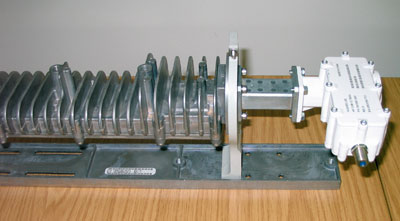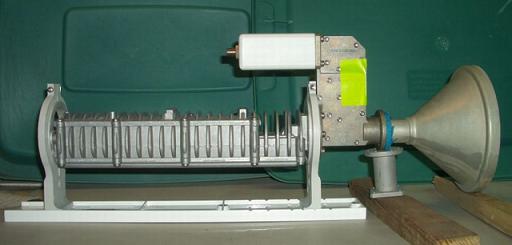| Home Login Register |
| Satellite Internet forum › HughesNet and Hughes HX VSATs › HX50 in Afghanistan pointing issues (HX W6) |
|
Pages: 1
|
HX50 in Afghanistan pointing issues (HX W6)(Read 16451 times) |
|
lostinafghanistan
Member
★★ Offline Posts: 4 Afghanistan |
Sep 14th, 2009 at 6:30am
|
| Back to top |
« Last Edit: Nov 24th, 2009 at 8:27am by Admin1 »
IP Logged
|
|
A.Walker
Senior Member
★★★ Offline Posts: 316 |
Reply #1 - Sep 14th, 2009 at 1:14pm
|
| Back to top |
IP Logged
|
|
Eric Johnston
Senior Member
★★★ Offline Posts: 2109 |
Reply #2 - Sep 14th, 2009 at 3:12pm
|
| Back to top |
« Last Edit: Nov 24th, 2009 at 8:29am by Admin1 »
IP Logged
|
|
lostinafghanistan
Member
★★ Offline Posts: 4 Afghanistan |
Reply #3 - Sep 14th, 2009 at 3:53pm
|
| Back to top |
« Last Edit: Sep 15th, 2009 at 11:24am by Admin1 »
IP Logged
|
|
A.Walker
Senior Member
★★★ Offline Posts: 316 |
Reply #4 - Sep 14th, 2009 at 5:18pm
|
| Back to top |
« Last Edit: Sep 15th, 2009 at 11:26am by Admin1 »
IP Logged
|
|
Eric Johnston
Senior Member
★★★ Offline Posts: 2109 |
Reply #5 - Sep 14th, 2009 at 5:49pm
|
| Back to top |
« Last Edit: Nov 24th, 2009 at 8:32am by Admin1 »
IP Logged
|
|
lostinafghanistan
Member
★★ Offline Posts: 4 Afghanistan |
Reply #6 - Sep 14th, 2009 at 6:34pm
|
| Back to top |
IP Logged
|
|
Eric Johnston
Senior Member
★★★ Offline Posts: 2109 |
Reply #7 - Sep 14th, 2009 at 11:04pm
|
| Back to top |
« Last Edit: Sep 15th, 2009 at 11:06am by Eric Johnston »
IP Logged
|
|
bray620
Member
★★ Offline Posts: 13 |
Reply #8 - Feb 24th, 2010 at 4:17am
|
| Back to top |
IP Logged
|
|
Admin1
YaBB Admin
★★★★★ Offline Posts: 1215 |
Reply #9 - Feb 24th, 2010 at 10:49am
|
| Back to top |
IP Logged
|
|
Ex Member
Ex Member
|
Reply #10 - Sep 30th, 2010 at 1:40pm
|
| Back to top |
IP Logged
|
|
Eric Johnston
Senior Member
★★★ Offline Posts: 2109 |
Reply #11 - Sep 30th, 2010 at 2:43pm
|
| Back to top |
« Last Edit: Oct 1st, 2010 at 10:53am by Admin1 »
IP Logged
|
|
USN - Retired
YaBB Moderator
★★★★★ Offline Posts: 837 Kentucky (USA) |
Reply #12 - Sep 30th, 2010 at 5:15pm
|
| Back to top |
USN (Ret)
IP Logged
|
|
Eric Johnston
Senior Member
★★★ Offline Posts: 2109 |
Reply #13 - Sep 30th, 2010 at 6:06pm
|
| Back to top |
« Last Edit: Sep 30th, 2010 at 11:06pm by Eric Johnston »
IP Logged
|
|
USN - Retired
YaBB Moderator
★★★★★ Offline Posts: 837 Kentucky (USA) |
Reply #14 - Sep 30th, 2010 at 7:56pm
|
| Back to top |
« Last Edit: Sep 30th, 2010 at 11:09pm by Admin1 »
USN (Ret)
IP Logged
|
|
Eric Johnston
Senior Member
★★★ Offline Posts: 2109 |
Reply #15 - Sep 30th, 2010 at 11:01pm
|
| Back to top |
« Last Edit: Oct 1st, 2010 at 7:42am by Admin1 »
IP Logged
|
|
Pages: 1
|
Email me: eric@satsig.net
Powered by YaBB 2.5.2!
YaBB Forum Software © 2000-. All Rights Reserved.
Disclaimer, Terms of Use and Privacy Forum User Agreement Forum rules Cookie policy.











